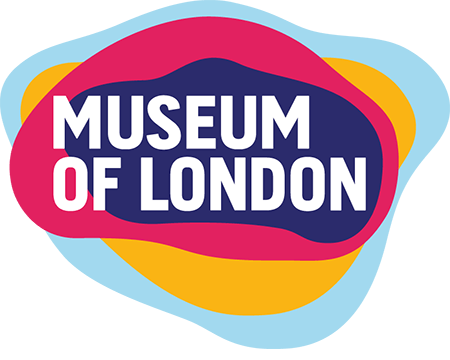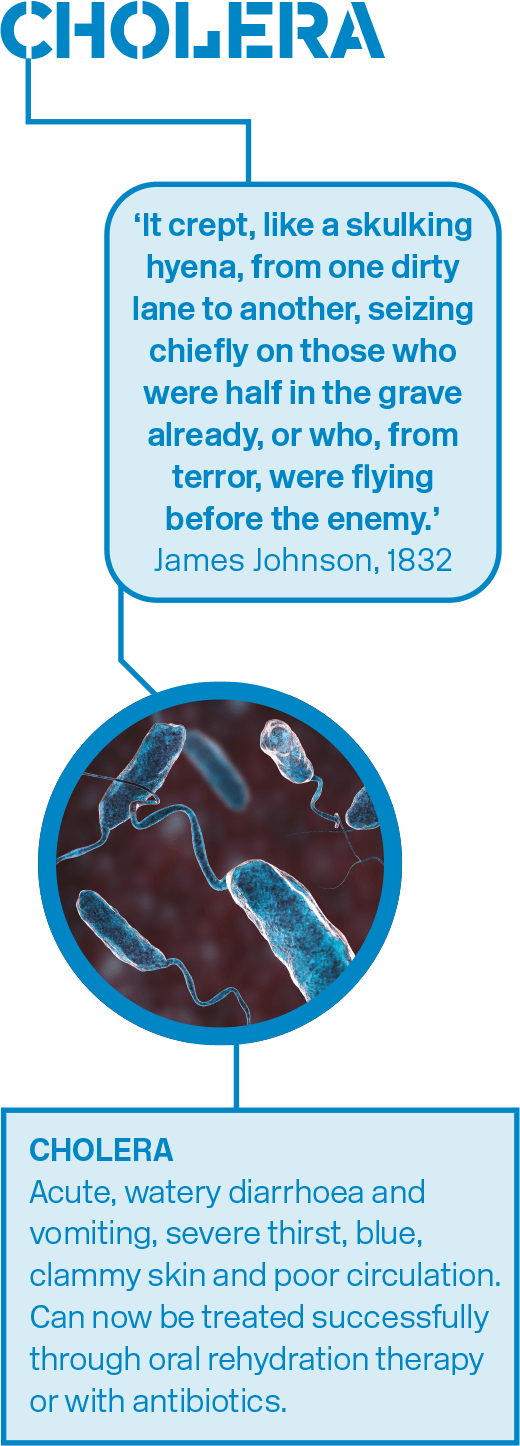
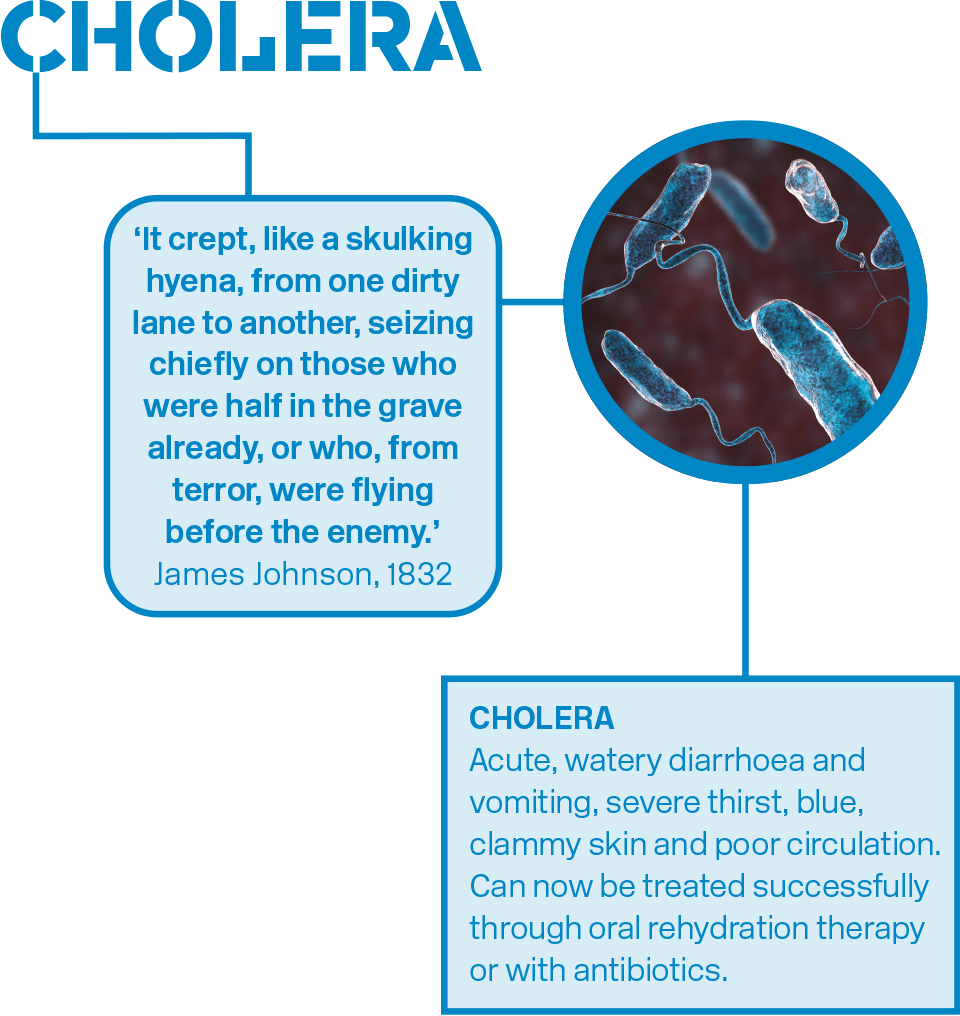
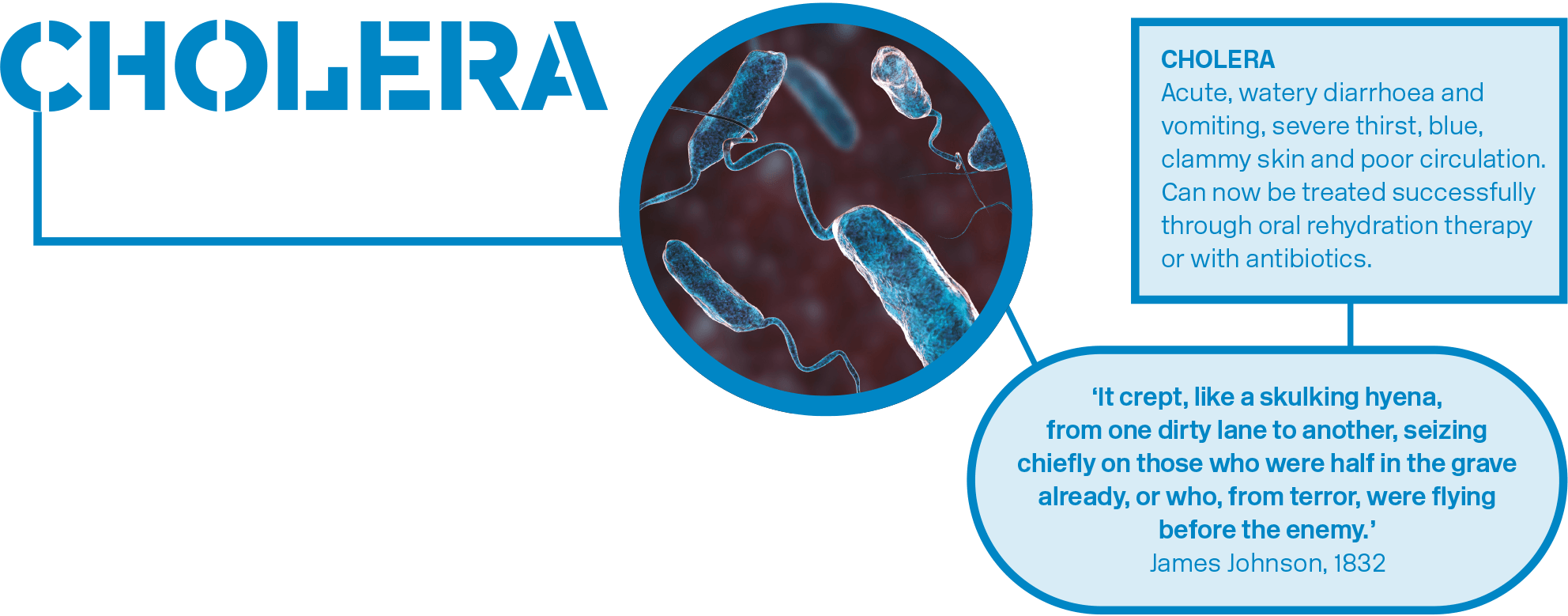

Public health measures can help overcome epidemic diseases.
When it first reached London in 1832, cholera was believed to spread through poisonous airs or ‘miasmas’. But John Snow’s pioneering study in Soho during the 1854 outbreak suggested that cholera was waterborne. The bacterial infection spread as a result of human waste contaminating drinking water. The poorest were most affected by this horrific disease, due to awful living conditions.
Public health measures to improve sanitary conditions culiminated in 1858 when Parliament granted funds for Joseph Bazalgette, Chief Engineer to the Metropolitan Board of Works, to transform London’s sewer system. Over the next 20 years, nearly 2,000km of sewers and four major pumping stations were built in the capital.
Thanks largely to these works, London has not had a major outbreak of cholera since 1866. Cholera continues to be a major cause of disease worldwide.
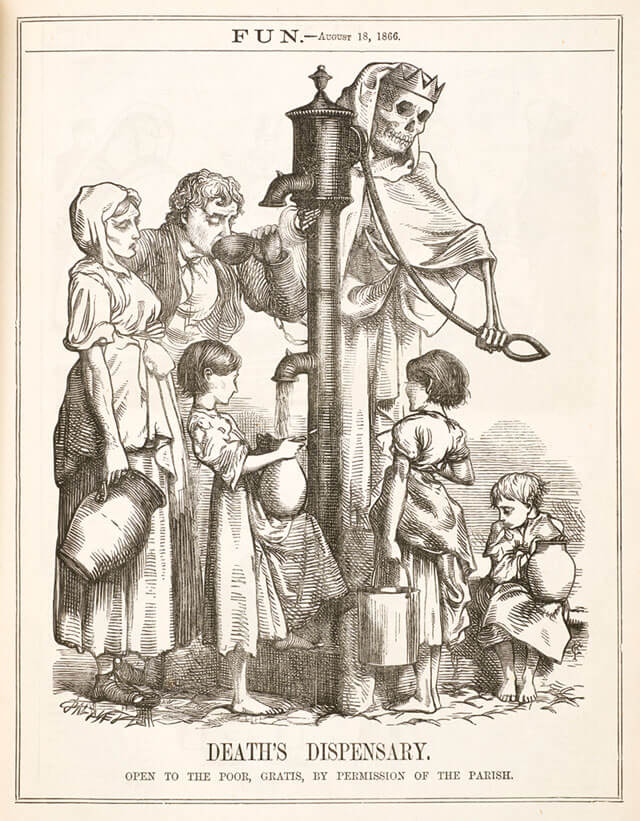
Fun magazine, 18 August 1866
This powerful image of Death dispensing contaminated water shows that by the
time of the final London outbreak in 1866, Snow’s theory of transmission by
water had gained support.
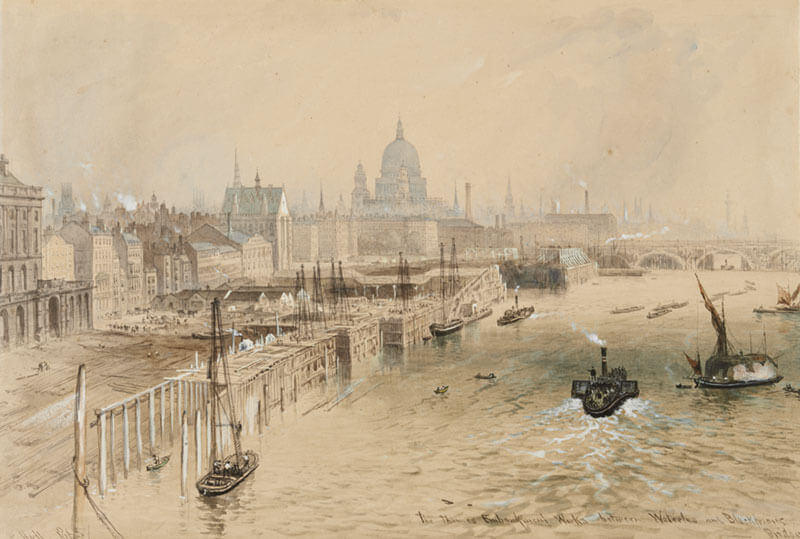
The Thames Embankment Works between Charing Cross Bridge and Westminster, 1865
E Hull
This atmospheric watercolour shows the scale of the timber framework used to construct Bazalgette’s sewers under the Embankment.
Broadside ballad, 1833
This ballad, or popular song, commemorates the end of the first outbreak of cholera and would have been sold cheaply on the streets of London. It satirises the remedies and measures proposed to fight the ‘Cholera Morbus’.
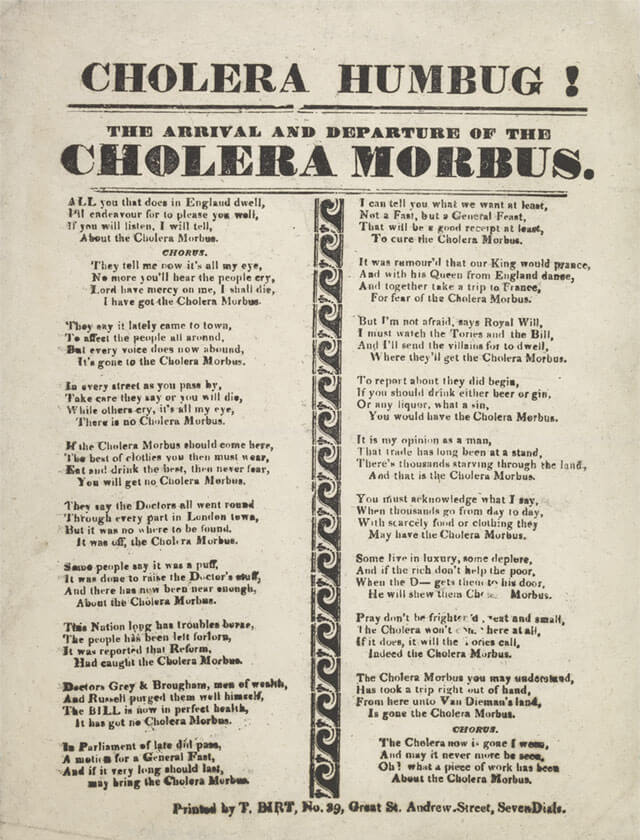
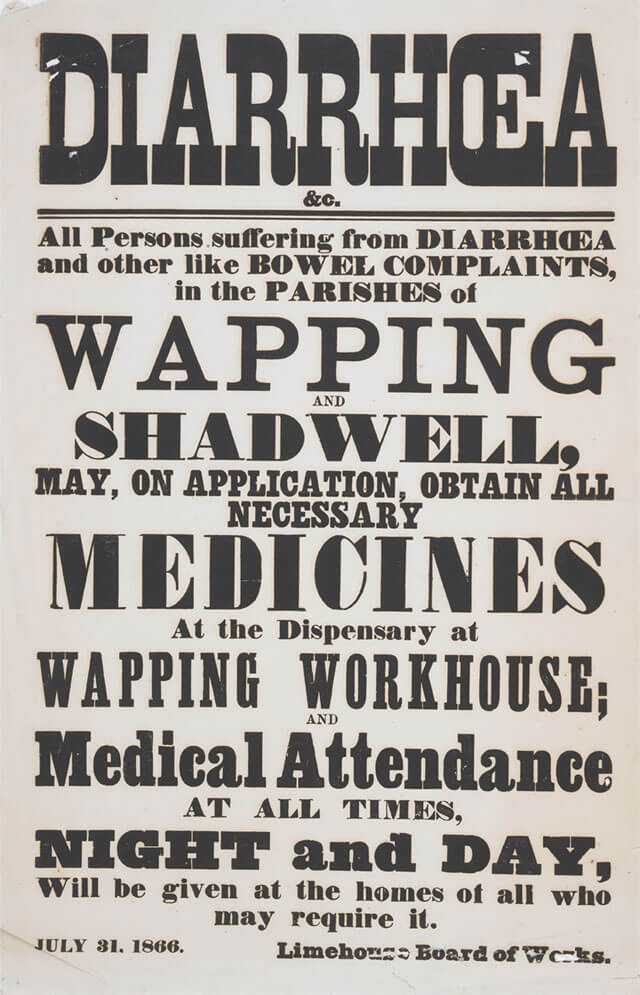
Poster, 1866
Limehouse Board of Works
Public information poster printed during the last London cholera outbreak for the Stepney Poor Law Union. Watery diarrhoea was the main symptom of cholera.
